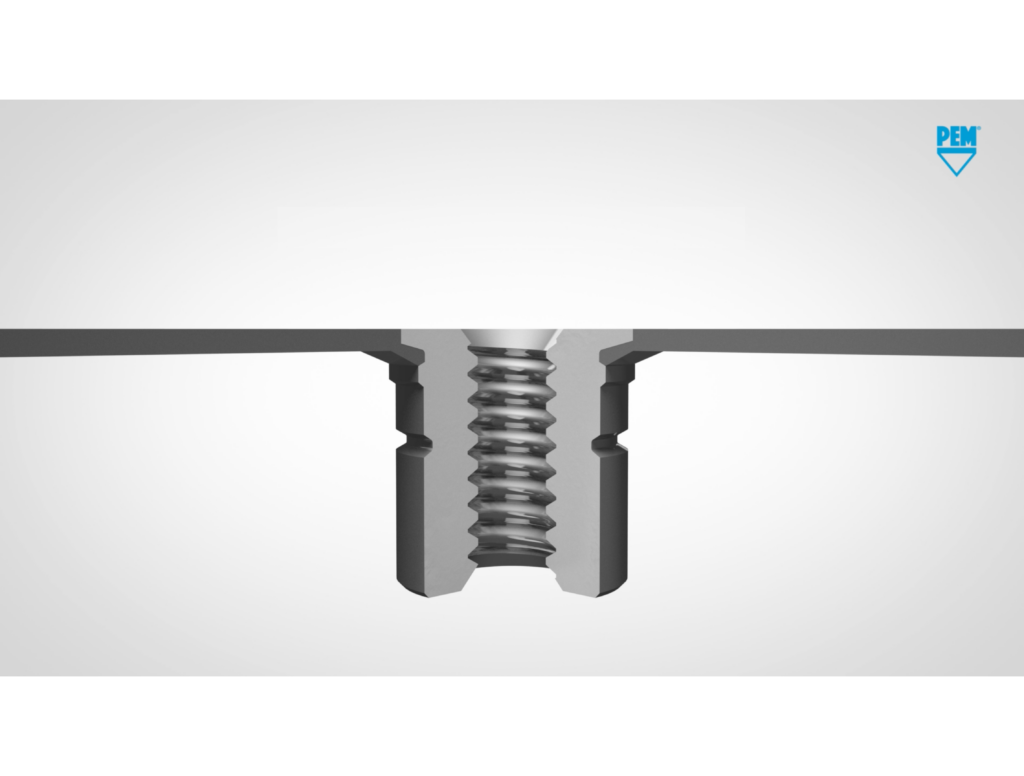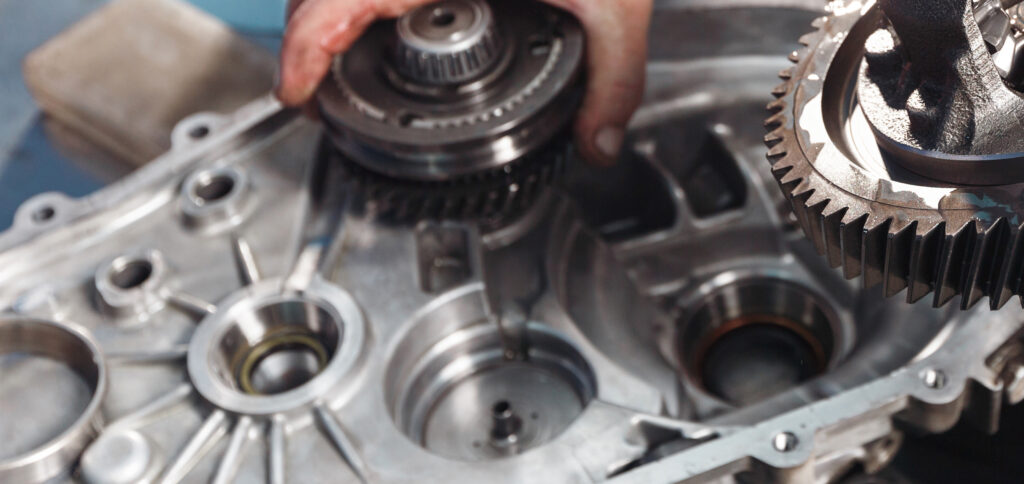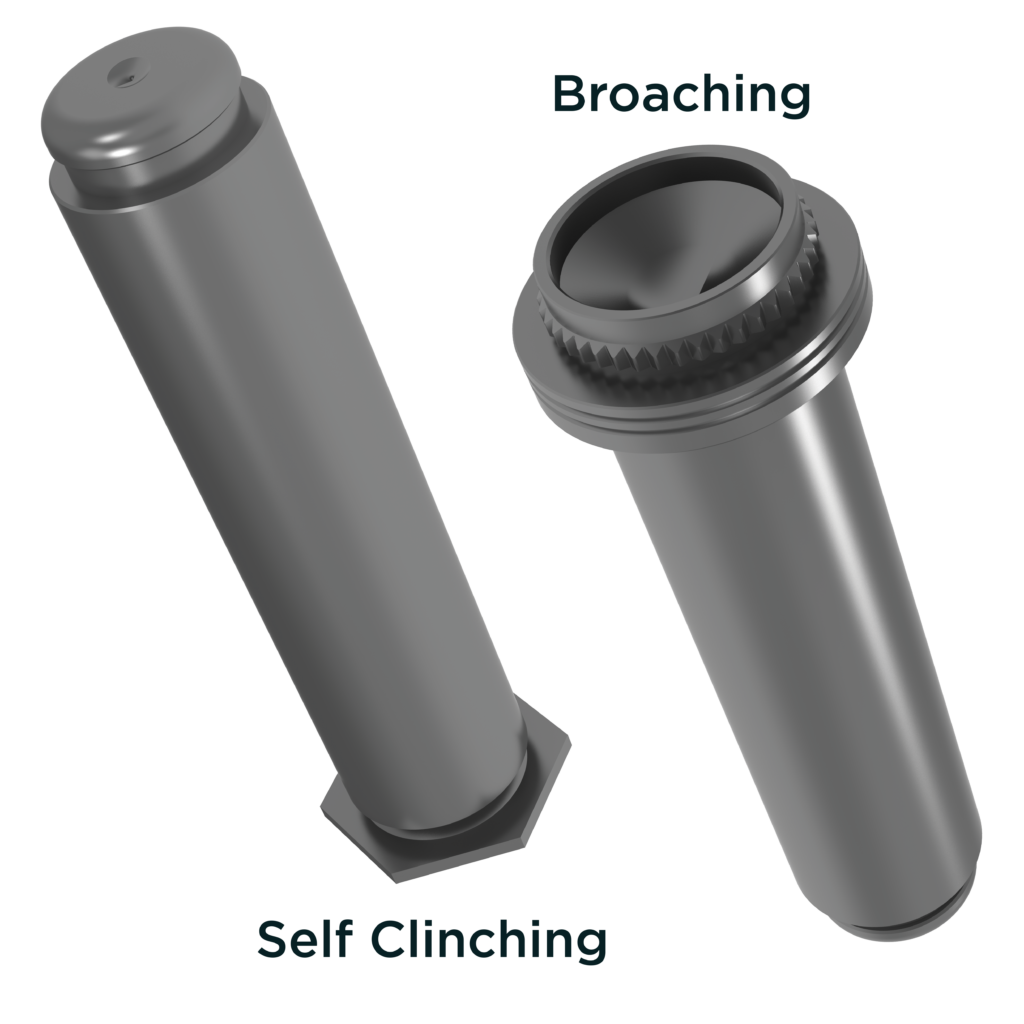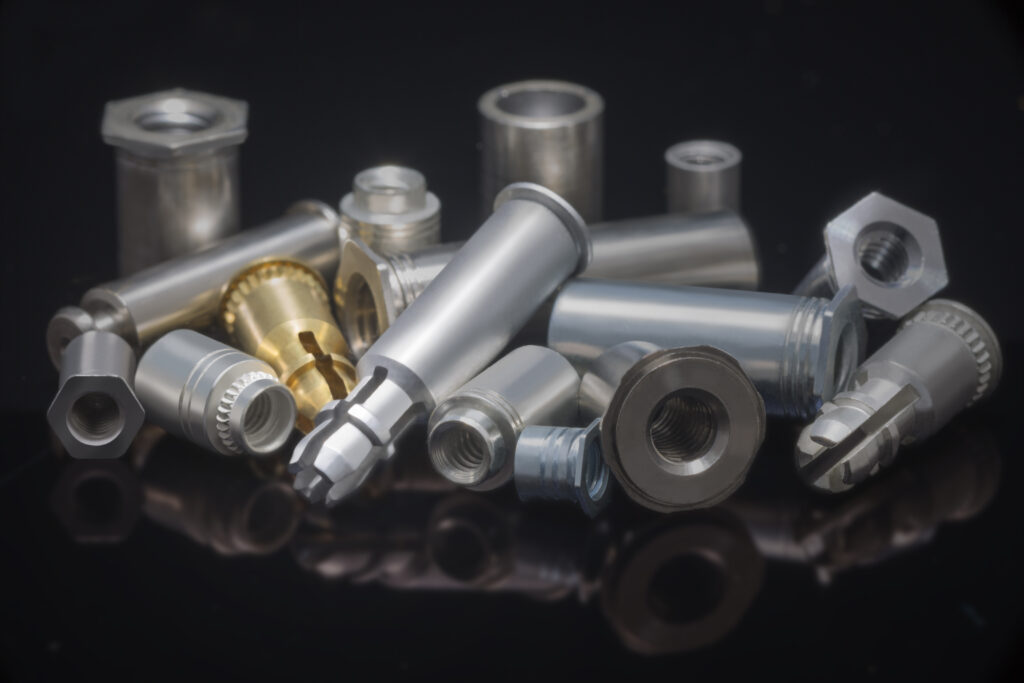
Table of Contents
Product Pages
Standoffs
KEYHOLE® Standoffs
SNAP-TOP® Standoffs
Nuts
Clinch Nuts
Floating Nuts
Blind Nuts
Flush Nuts
Locking Nuts
Rivet Nuts
Studs
Locating Pins
Captivated Screws
Simple Screws
Spring-Loaded Screws
Knob Cap Screws
Threaded Inserts
Press-In Inserts
Molded-In Inserts
Ultrasonic/Heat-Staking Inserts
Compression Limiters
Specialty Fasteners
Cable Tie Mounts
TACKPIN®
Panel-to-Panel Fasteners
Right Angle Fasteners
Attachment Technologies
Overview
The simplest press-in inserts typically consist of an internal thread with a diamond knurl on the outer diameter, leaving a short length smooth. A partial slit runs the length of the knurls, allowing a degree of elastic deflection inward. A flange on the head side can greatly improve pull-through strength while straight knurls can help resist torque-out. To forego a slit or knurls, a hex body with a simple barb profile addresses both torque-out and pull-out with limited tooling. Brass is common for its thermal conductivity, while lead-free aluminum allows for lightweight parts. The hex body insert can be made from stainless steel, but this material is stiff enough to not be regularly considered in slotted inserts.
Installation
Press-in inserts (sometimes called cold-pressed inserts) are meant to be installed in a plastic part post-mold with no added heat, conditions which make the plastic more susceptible to cracking under large install forces. Since press-in inserts rely entirely on the interference fit to provide pull-out and torque-out resistance, the outer knurl diameter still needs to be greater than the hole diameter. The slotted design accomplishes this by allowing the knurled section to gently deflect inward as the part is driven into the hole, reducing stress in the plastic. Additionally, as a mating screw engages with the threads of the insert, the barrel is forced back into its original diameter, sinking the knurls into the walls of the plastic hole. While this is not as secure as a heat-staking or molded-in insert, it is a quick and easy solution that foregoes large investments in installation equipment and tooling.
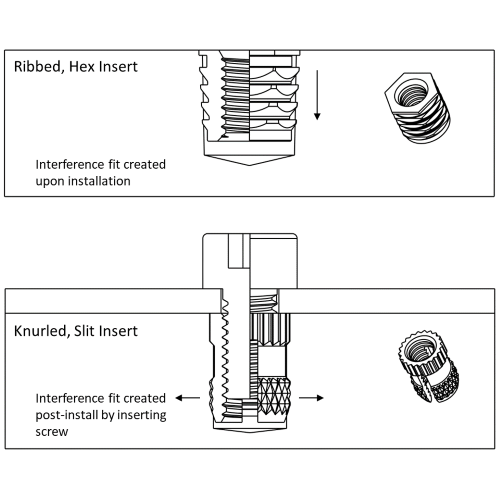
Animation of the press-in installation process for threaded inserts.
Application
In the dashboard of a car, a variety of plastic, composite, and circuitry materials make up the automotive electronics that allow the driver to interface with the stereo, air conditioning, and many other systems. Since many of these components don’t experience more stress than what it takes to press a button, press-in inserts made from lightweight aluminum can be used to fasten buttons and displays to structural frames. A screen can be screwed to an internal, composite frame with metal threads and covered with a plastic housing that clips into different locations on the same frame, making for a stylistic, sturdy console design.
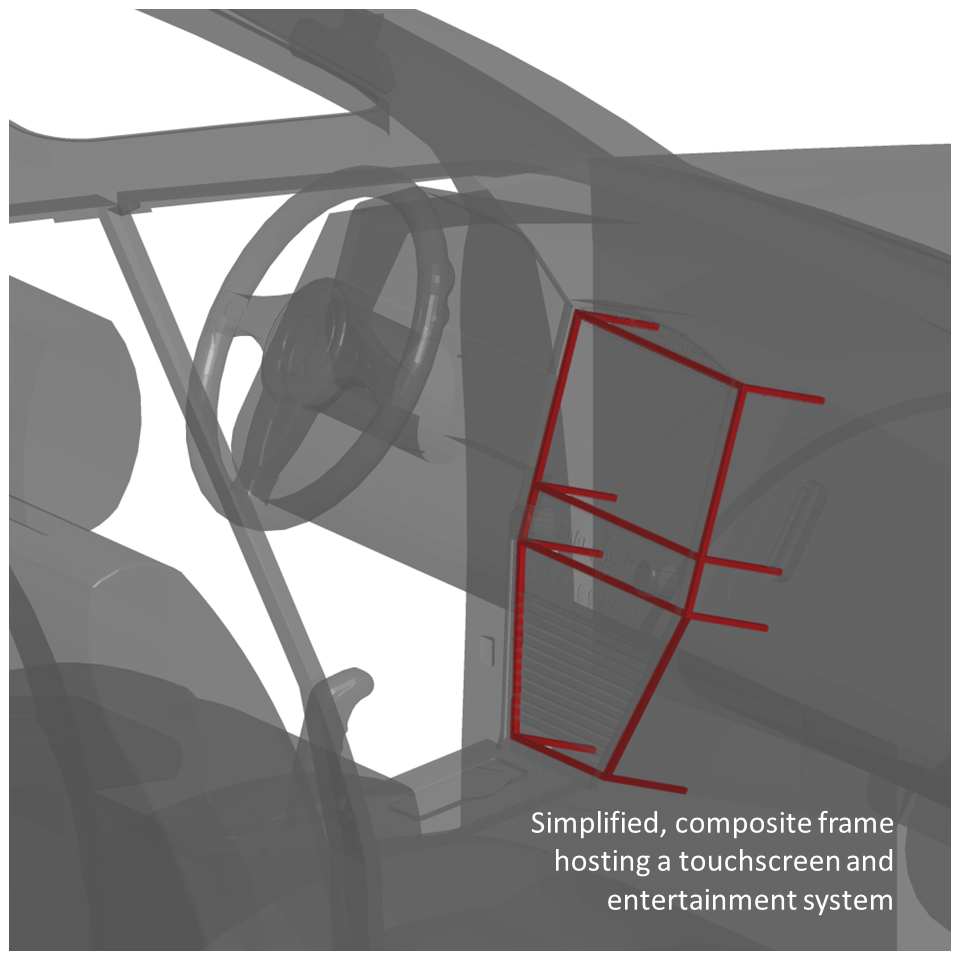
The center console of a car typically consists of a rigid frame with lightweight finish materials for the surface.
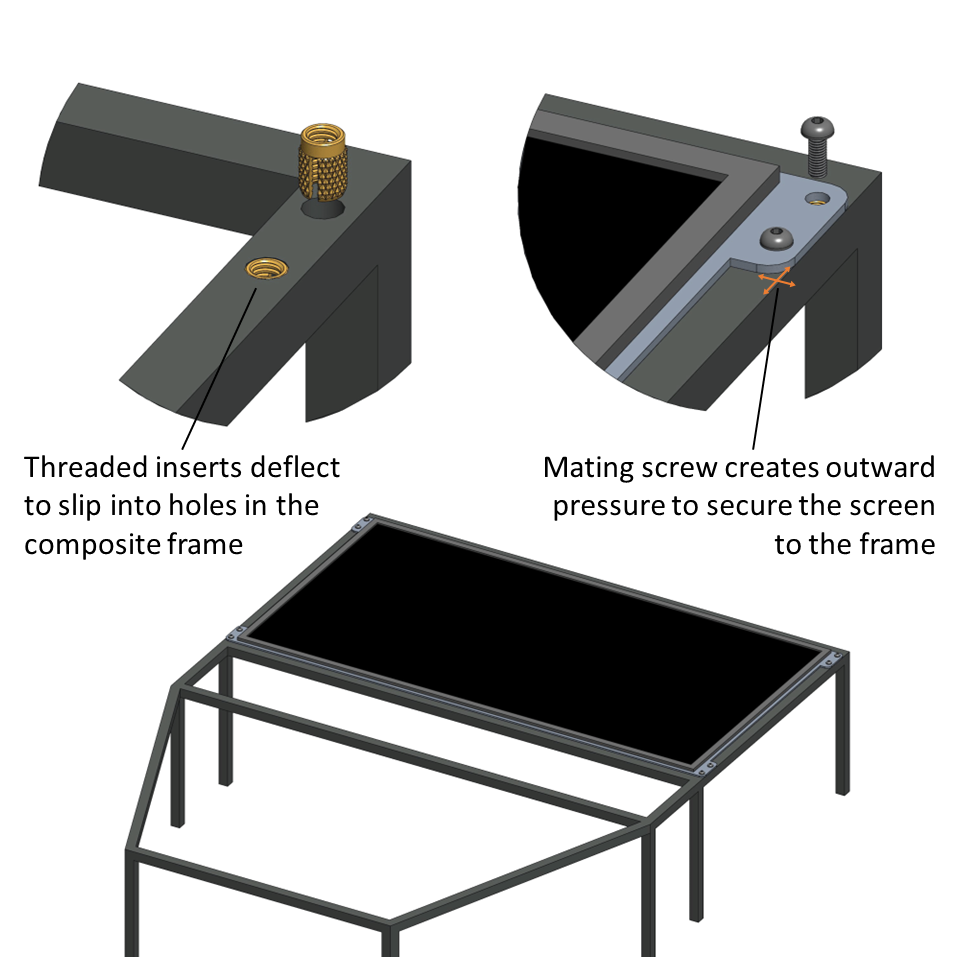
Press-in threaded inserts allow for electrical and cosmetic components to be mounted securely to a composite frame.
Alternative Solutions
While press-in aluminum inserts can solve mounting problems concerning electronic components onto plastic or composite structures, they are still made of metal, which add weight to the assembly. It’s more common that custom designed clips or retainers are used to further reduce weight, especially with the low amount of loading induced by the application. However, press-in inserts may still be desirable should future maintenance be expected, as the metal threads make for a more reliable joint that can still be reliably disassembled and reassembled.
Relevant Products from PEM:
See feature and material options for press-in inserts in our Product Finder:
To learn more about press-in inserts, find installation and performance data in the SI® Catalog.
Have a project?
Let’s get started.
Talk to us about creating a custom part, tool or process. We are equipped to help you to take on and solve your biggest engineering challenges.
Talk to us about creating a custom part, tool or process. We are equipped to help you to take on and solve your biggest engineering challenges.

Looking for CAD Downloads?
Access to the original PEM Catalog and CAD downloads.
Have a question?
Talk to an Engineer.
See what’s possible.
Connect with a PEM® engineering expert today and discover a reliable, cost-effective fastening solution for your challenging applications.
Or Call Us: 1-800-342-5736




